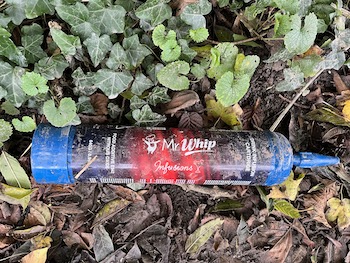 Our ‘anonymous drama’ (AD) programme has been supporting people in recovery, both in residential settings and community groups, for several years now – with spectacular results.
Our ‘anonymous drama’ (AD) programme has been supporting people in recovery, both in residential settings and community groups, for several years now – with spectacular results.
When I’m describing it to someone who has never heard of it, I usually say it’s like ‘drama therapy’ for people who often have no interest in either drama or therapy.
The unique elements include:
1. Anonymity – Participants are working with fictional characters so no one in the session knows the difference between what’s real and what’s fiction.
2. Programming – The programme has been broken down into session plans with safeguarding guides so that they don’t need to be delivered by drama or therapy-type professionals – they can be delivered locally by support staff or volunteers.
3. Opportunity – Giving non-creative ‘civilians’ the opportunity to take part in things like improvisation and role play.
We also deliver sessions across the UK using our own experienced delivery teams – some of whom are drama or therapy type professionals, while some are support staff or volunteers. Some residential or community groups don’t have the available budget to bring in our delivery teams, so the remote session plan model was developed to extend the reach of the work and ensure that lack of budget and resources wouldn’t be a barrier.
If we need advice or interventions for our physical health of course we all know we can engage with medical professionals like GPs. We can also do our own research and seek to improve our physical health via things like diet and exercise.
 I believe the same applies to our mental health. Yes, we can engage with mental health professionals and without a doubt they provide a valuable service. However, the ethos of AD is that we’re capable of exploring our own mental health and emotional wellbeing, without depending on professionals.
I believe the same applies to our mental health. Yes, we can engage with mental health professionals and without a doubt they provide a valuable service. However, the ethos of AD is that we’re capable of exploring our own mental health and emotional wellbeing, without depending on professionals.
Glasgow University recently completed an impact study on AD and the results reaffirmed what we already knew from the feedback of thousands of participants. Taking part in the AD programme has a positive impact on the mental health and emotional wellbeing of participants, and ultimately supports them on their recovery journey.
I have been writing, directing and producing for film and theatre for 15 years, and my introduction to the concept of using creative practices for therapeutic gains was seven years ago. I was invited into a maximum-security prison to work with a group of ten inmates on a new theatre programme. We started with a blank page and with our support they devised their own group script which they went on to perform for fellow inmates, family and staff. The project had a huge impact on the participants, but it was also life changing for me.
Since that day I’ve become obsessed with the concept of using creative practices to help people achieve more positive outcomes. I still work periodically on mainstream projects, but I have become more focussed on ‘socially aware’ work and aligned myself with partners who are motivated to help individuals and their communities who are marginalised or vulnerable in some way.
As I explored areas like drama therapy one of the first things I did was anonymise our sessions. It felt potentially problematic to have creative professionals like myself – however well intentioned – exploring participants’ lived experience and unresolved trauma, and periodically this created emotionally charged or even triggering environments.
Of course, we can’t completely remove the possibility of someone being triggered. That could happen at any time, but the anonymity and safeguarding protocols built into our session plans keep the possibility to a minimum. For example, if a participant wants to share details relating to an adverse childhood experience (ACE), our session plans support them to explore the ACE of a group fictional character. A subtle shift, but a powerful one, and in our experience it adds more value from a self-awareness perspective. The opportunity is to drill deeper using fiction by proxy as a safety net.
AD is most definitely not a drama group. It’s not about people who are interested in writing or acting (though some participants are and that’s great). The focus is people who have an open mind and are up for trying something different. The work in the sessions around self-awareness and mental health and emotional well-being is the focus.
That said, usually a group script starts to emerge over the weeks/months of sessions – mixture of very personal and insightful monologues, sketches and spoken word. Some groups decide they want to share these scripts with their family, friends, staff, and these events are incredible. Nothing fancy, no stage or lights, just a group of volunteers from the group, and a celebration of their hard work and effort. In some cases, participants are reunited with family members with whom they have completely fractured relationships.
 My parents were both alcoholics and my younger brother spent most of his adult life in the justice system before dying of a heroin overdose. I doubt very much I will ever be involved in any future project professionally that will be more important or personal to me. Everything I do in this field is motivated by the trauma that I experienced as a family member of people who struggled with alcohol and drug addiction. It killed my brother and my father. My mother has been sober for 25 years, but even she knows that she can’t take her sobriety for granted and lives one day at a time.
My parents were both alcoholics and my younger brother spent most of his adult life in the justice system before dying of a heroin overdose. I doubt very much I will ever be involved in any future project professionally that will be more important or personal to me. Everything I do in this field is motivated by the trauma that I experienced as a family member of people who struggled with alcohol and drug addiction. It killed my brother and my father. My mother has been sober for 25 years, but even she knows that she can’t take her sobriety for granted and lives one day at a time.
Mark MacNicol, 4Um Theatre’s playwright and director
I thought it might be useful to take a snapshot of some recurring impact areas/quotes that came back from just a small random selection of participant evaluations and the Glasgow University study:
‘Boosted my general mood levels and state of mind.’ ‘Confidence growing with each session.’ ‘I’m a different person.’ ‘Even in early detox and lacking focus I was benefiting.’ ‘I work on things in character I’ve never shared with anyone.’ ‘I never knew I was capable of this.’ ‘They recommended we use a journal outside of sessions and I have it with me all the time.’ ‘My anxiety and depression more impacted by this than any medication I’ve taken.’ ‘I do the breathing exercise every day.’ ‘I rearranged other commitments, and refused to miss a session.’ ‘I could pass on any activities, never felt pressured.’ ‘My literacy wasn’t great, the script work has been a big help.’ ‘The thing I remember most about the sessions is the laughter.’ ‘After this I know there is an inner strength inside me, I never knew was there.’ ‘These sessions make me more likely to speak to a therapist.’ ‘After this programme I find eye contact easier.’ ‘I felt like all the people I’ve lost to addiction were in the audience at the reading.’ ‘I find the sharing bit in fellowship meets problematic but in character it’s so much easier.’ ‘These sessions helped me look into the mirror for the first time in my life.’

The service provider response to AD is equally positive. ‘The recovering voices sessions and performance have been a great addition to our programme at Abbeycare by using creative expression to aid people’s recovery process,’ said Liam Mehigan, director at Abbeycare Clinics. ‘The sessions culminating in the performance have given participants an opportunity to creatively express themselves. Participants have been able to build confidence and develop trust and their relationships with one another as they support each other whilst participating.
‘The sessions have also enabled participants to have fun whilst at the same time challenge themselves,’ he added. ‘It’s beautiful to witness people grow and develop through the process.’
If anyone is interested in possibly hosting an AD programme either via an existing delivery team or your own volunteers/support staff, please email info@4umtheatre.org















 Shaun from Grimsby was first introduced to drugs at the age of just nine. By the age
Shaun from Grimsby was first introduced to drugs at the age of just nine. By the age  Opium poppy cultivation in Afghanistan has fallen by 95 per cent following the Taliban’s opium ban last year,
Opium poppy cultivation in Afghanistan has fallen by 95 per cent following the Taliban’s opium ban last year, 

 Joint working
Joint working Housing shortage
Housing shortage

 First things first
First things first
 Much as the intention was always to provide useful information to PWUD so that they could manage the risk, we knew that people reading the advice on our websites or social media accounts were more likely to be those working in the sector. It made sense to recalibrate
Much as the intention was always to provide useful information to PWUD so that they could manage the risk, we knew that people reading the advice on our websites or social media accounts were more likely to be those working in the sector. It made sense to recalibrate 












 A new EU-wide ‘roadmap’ has been adopted to tackle drug trafficking and criminal networks, the European Commission has announced.
A new EU-wide ‘roadmap’ has been adopted to tackle drug trafficking and criminal networks, the European Commission has announced.










 WithYou
WithYou



 The team
The team
 Criminal Justice
Criminal Justice Positive futures
Positive futures











 Mental Health
Mental Health ‘I left the army after 14 years as I felt I’d reached the end of my time – I’d done and seen everything I needed to, been to war, got the T shirt and wore medals. I got a civilian job working as a development analyst for an airline and had a successful career in project management, but I knew inside I was an angry man. I didn’t realise I had mental health issues, although I guess everyone around me soon realised.
‘I left the army after 14 years as I felt I’d reached the end of my time – I’d done and seen everything I needed to, been to war, got the T shirt and wore medals. I got a civilian job working as a development analyst for an airline and had a successful career in project management, but I knew inside I was an angry man. I didn’t realise I had mental health issues, although I guess everyone around me soon realised.

 When squeamishly reading the incident report, my crashing into an exhibiting artist’s sculpture leapt off the page. Thankfully no damage was done – the damage was all to my reputation. I ended up suspended, narrowly avoiding dismissal for gross misconduct.
When squeamishly reading the incident report, my crashing into an exhibiting artist’s sculpture leapt off the page. Thankfully no damage was done – the damage was all to my reputation. I ended up suspended, narrowly avoiding dismissal for gross misconduct. Arts in recovery
Arts in recovery In 2011, I founded the visual arts charity Portraits of Recovery (PORe) – an organisation that works with contemporary art, artists and people and communities in recovery to create inspirational art for reimagining the world we live in. It was a slog working from home with little funding. PORe was just me, but I had done it. A raft of projects followed, in a range of art forms, and working with multiple partners. A 2015 project called Typecast saw people in recovery work with clay, to create an exhibition at Manchester School of Art. In 2017, young Asian men in recovery took part in workshops with artist Sutapa Biswas. The work resulted in a bold, neon artwork at Rochdale bus station, now in the permanent collection of Touchstones Rochdale.
In 2011, I founded the visual arts charity Portraits of Recovery (PORe) – an organisation that works with contemporary art, artists and people and communities in recovery to create inspirational art for reimagining the world we live in. It was a slog working from home with little funding. PORe was just me, but I had done it. A raft of projects followed, in a range of art forms, and working with multiple partners. A 2015 project called Typecast saw people in recovery work with clay, to create an exhibition at Manchester School of Art. In 2017, young Asian men in recovery took part in workshops with artist Sutapa Biswas. The work resulted in a bold, neon artwork at Rochdale bus station, now in the permanent collection of Touchstones Rochdale.






 You Need To Get Angry
You Need To Get Angry Drop in Overdoses
Drop in Overdoses Activism scaled up further in response to diminishing treatment budgets. ‘Imagine what the drug-related death figure would be if naloxone wasn’t about,’ said Mick Webb, while George Charlton – whose alter ego Naloxone Man would become a regular sight – said: ‘If we’re not giving out naloxone, we’re giving the message that it doesn’t matter if you die. Overdose is reversable, death is not.’
Activism scaled up further in response to diminishing treatment budgets. ‘Imagine what the drug-related death figure would be if naloxone wasn’t about,’ said Mick Webb, while George Charlton – whose alter ego Naloxone Man would become a regular sight – said: ‘If we’re not giving out naloxone, we’re giving the message that it doesn’t matter if you die. Overdose is reversable, death is not.’  Further Provision
Further Provision




 Prior to this, Simon was Macmillan’s Executive Director of Strategy and Performance, having been with the team since 2005.
Prior to this, Simon was Macmillan’s Executive Director of Strategy and Performance, having been with the team since 2005. 











